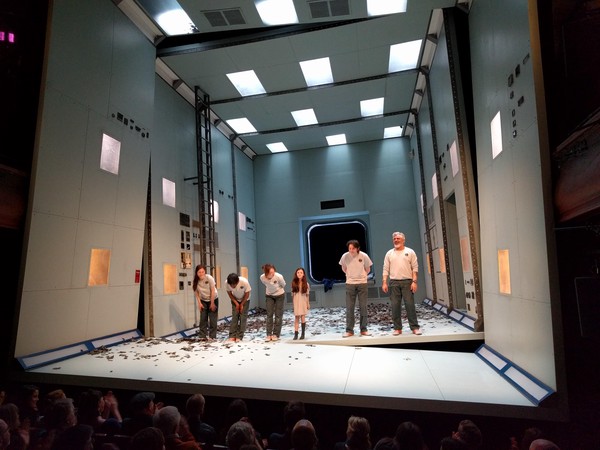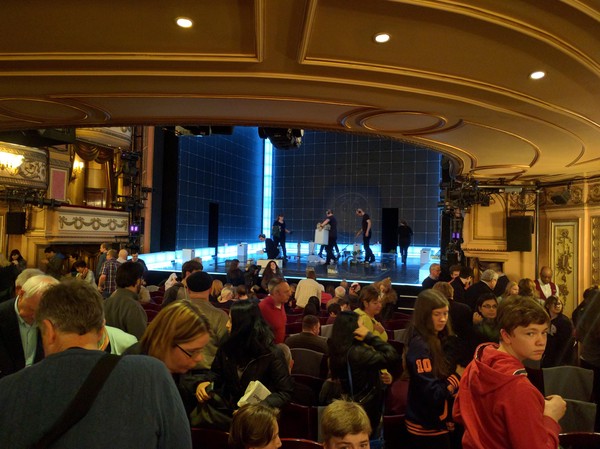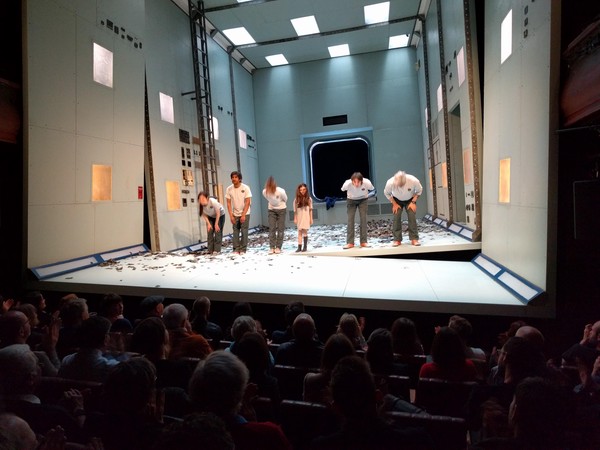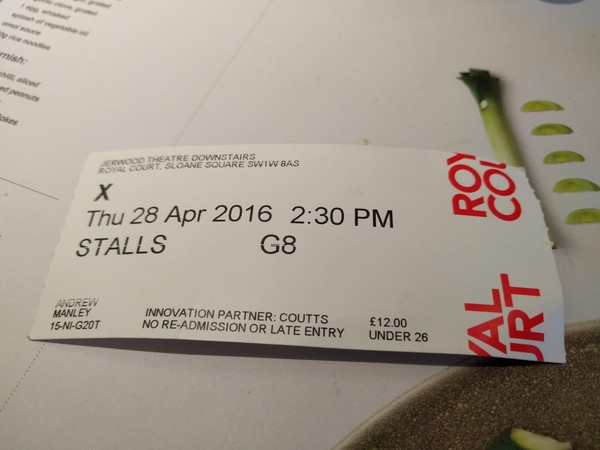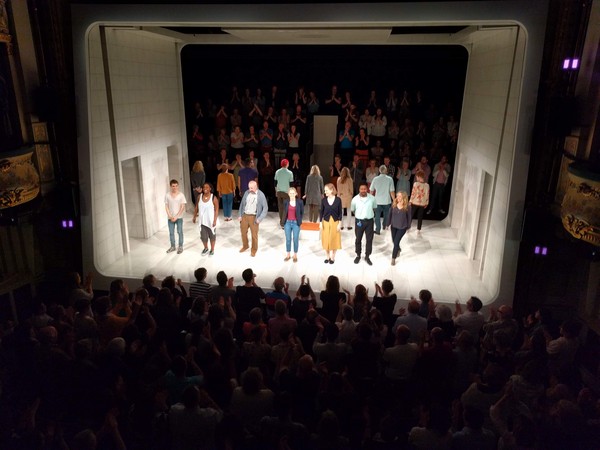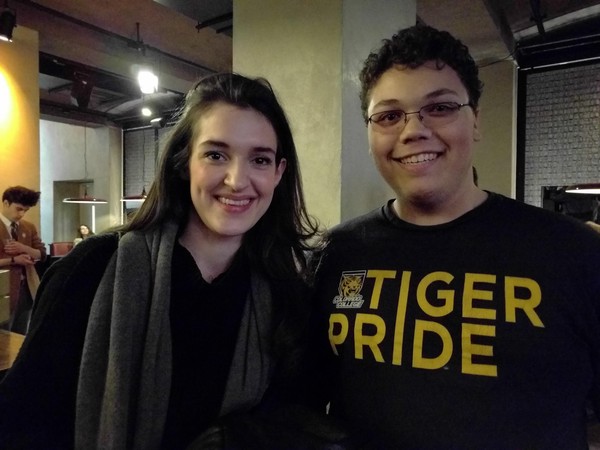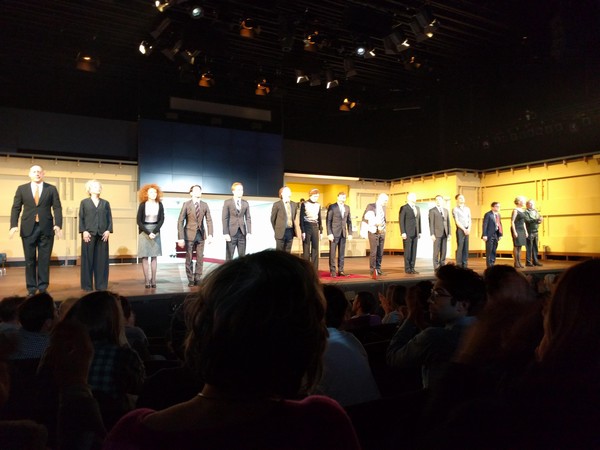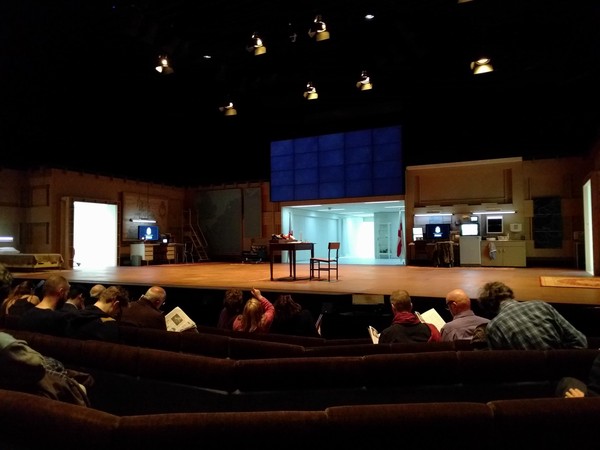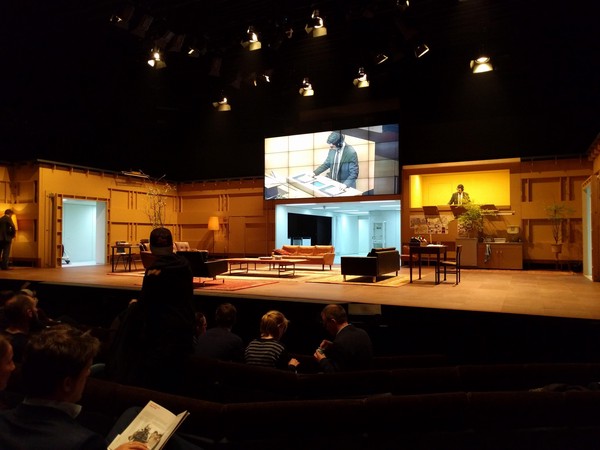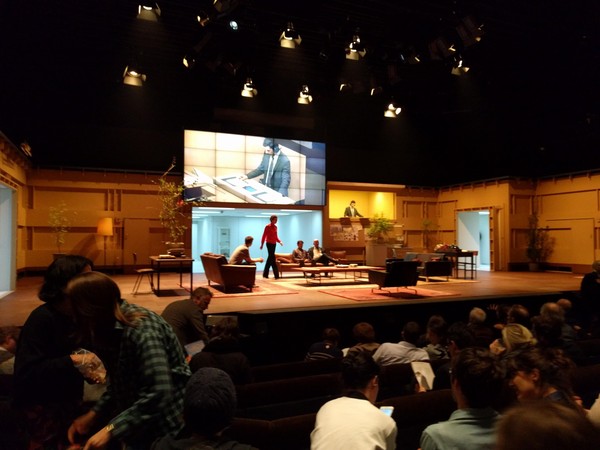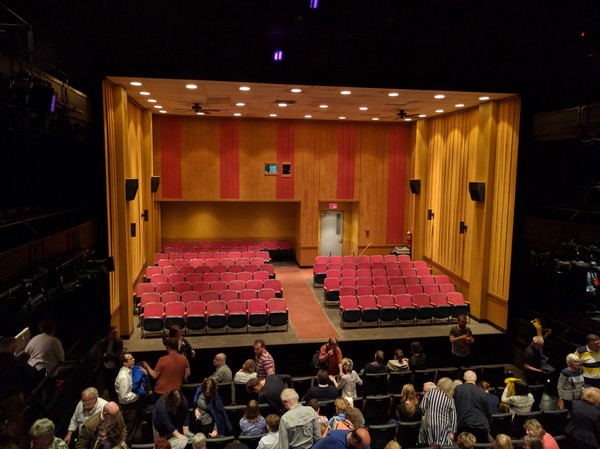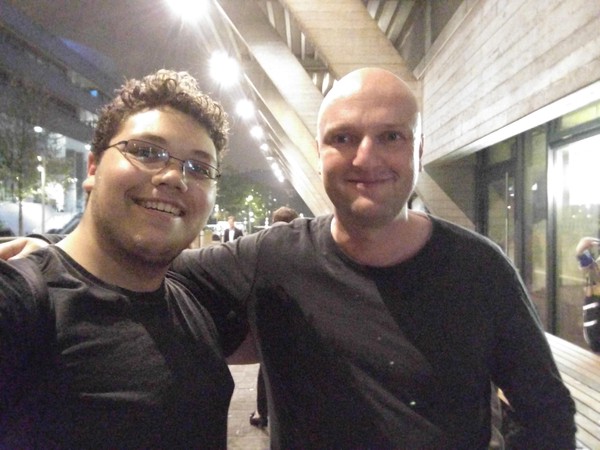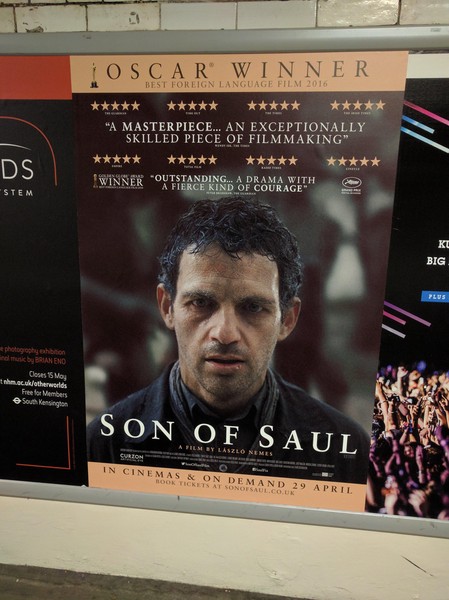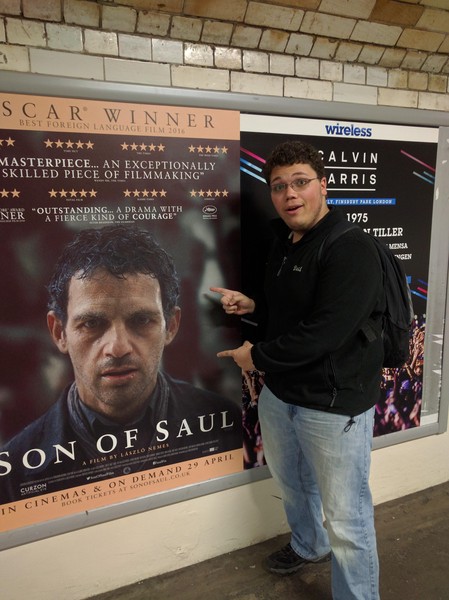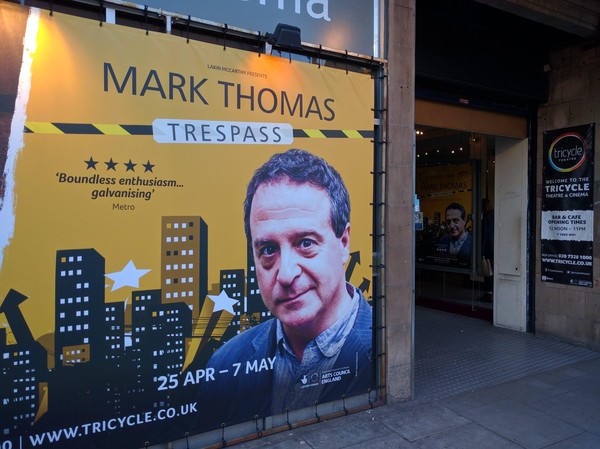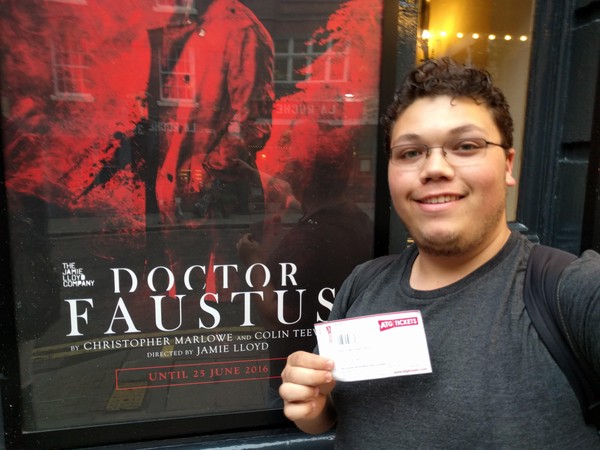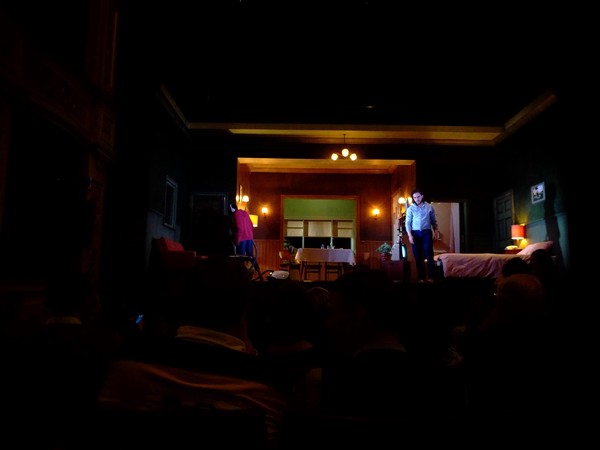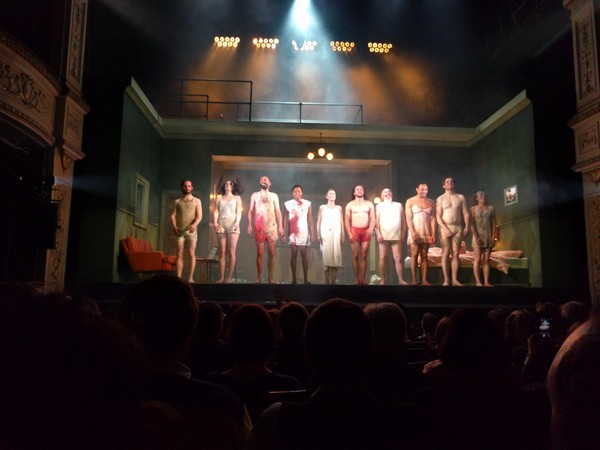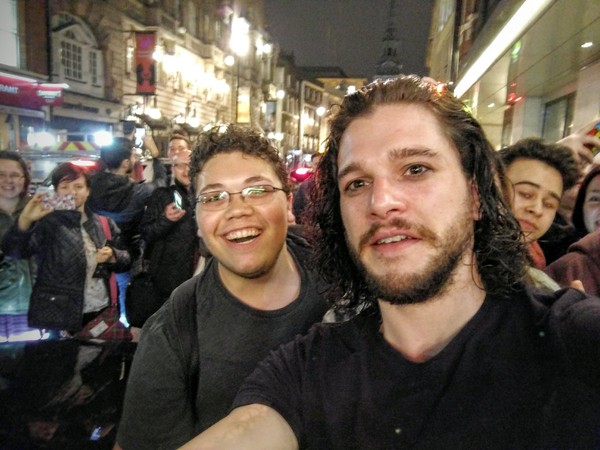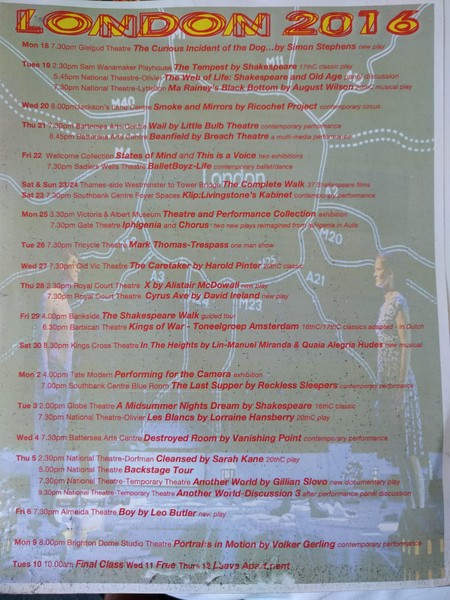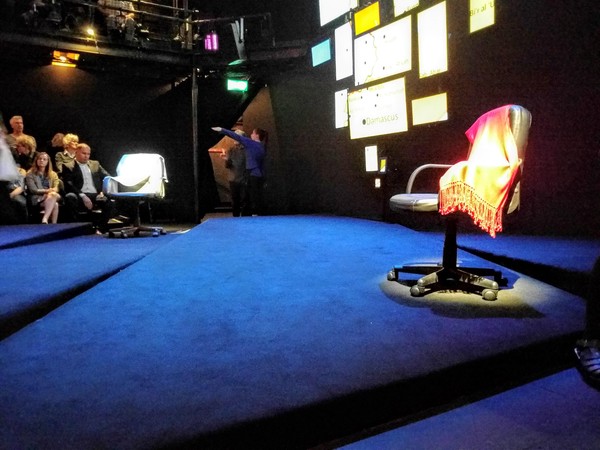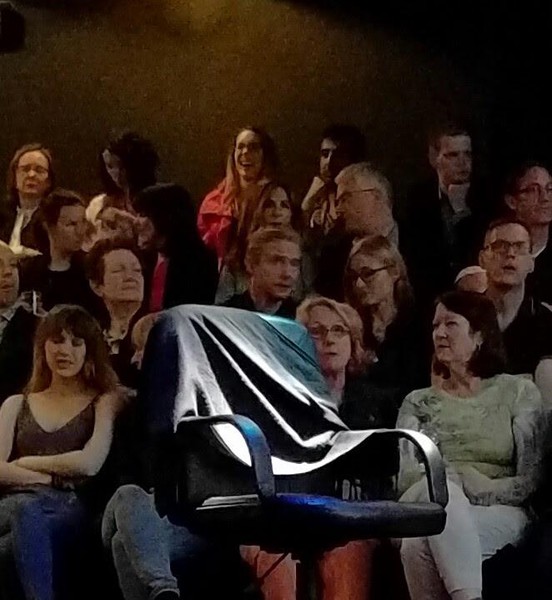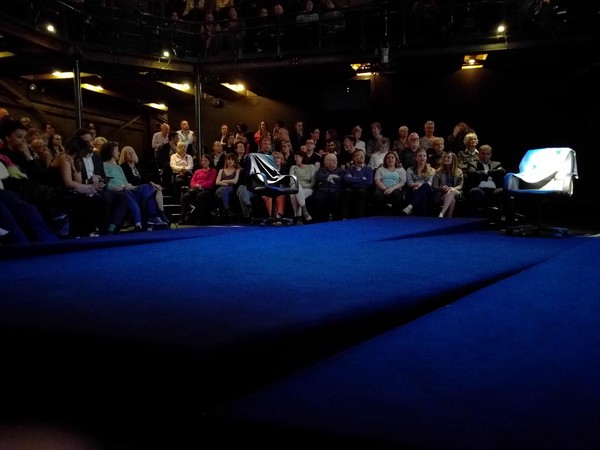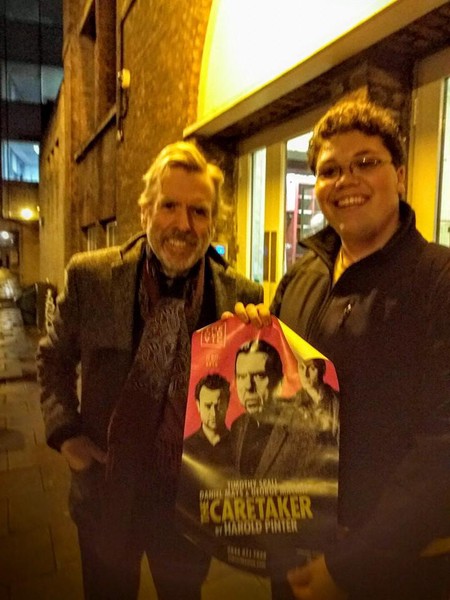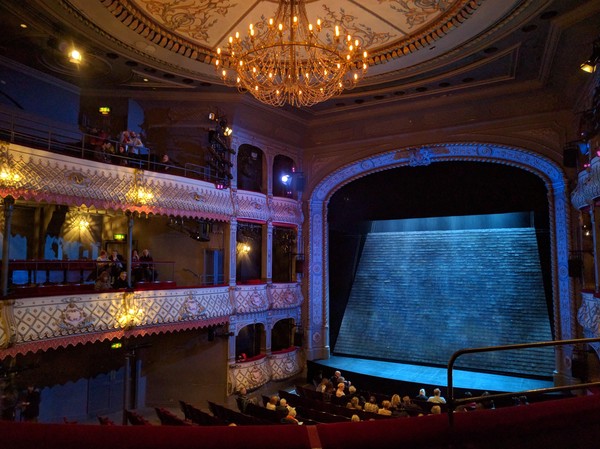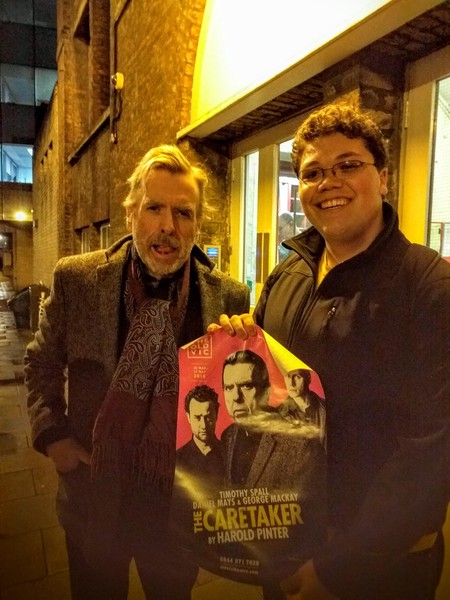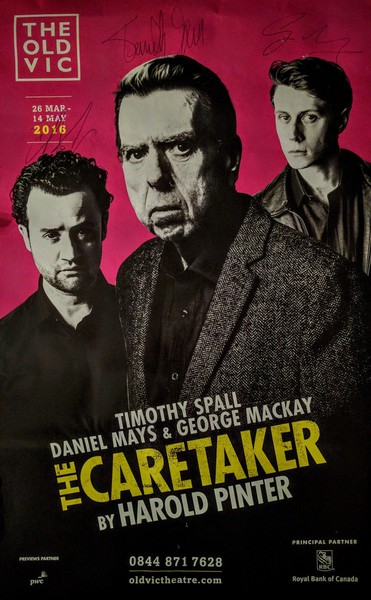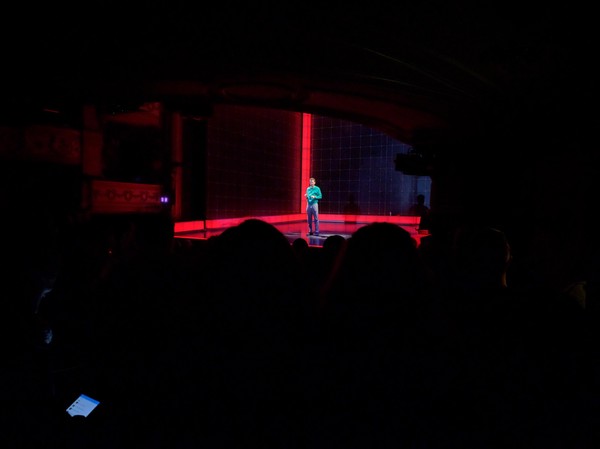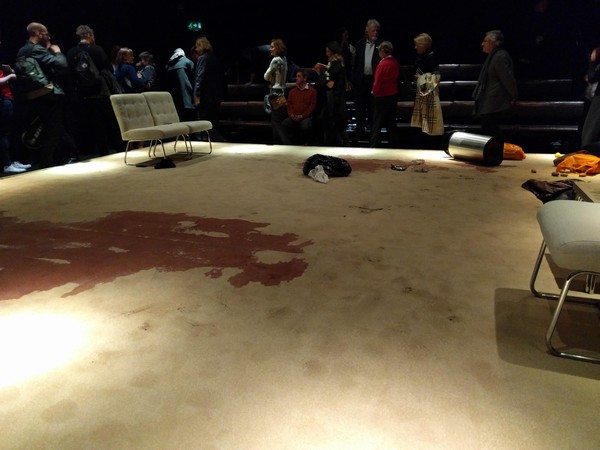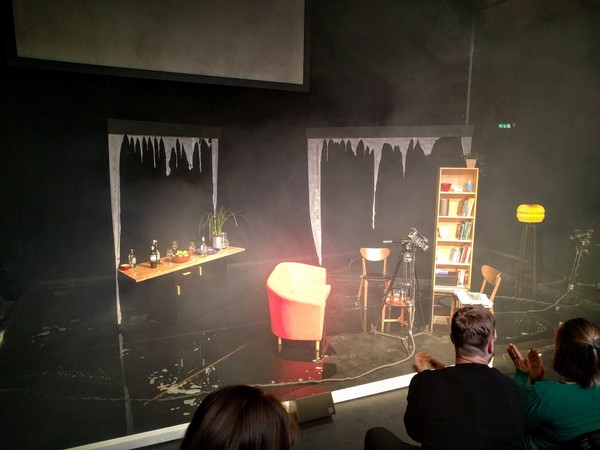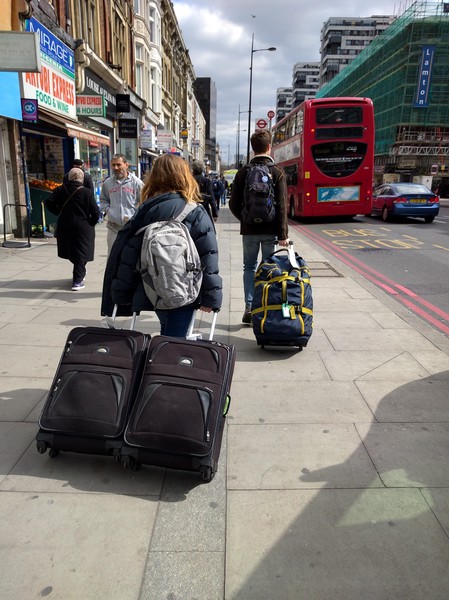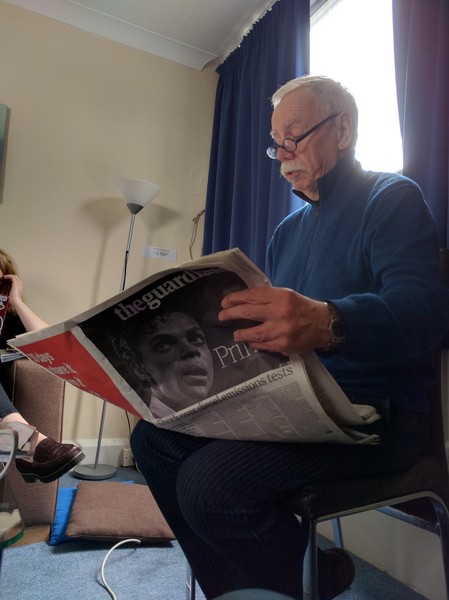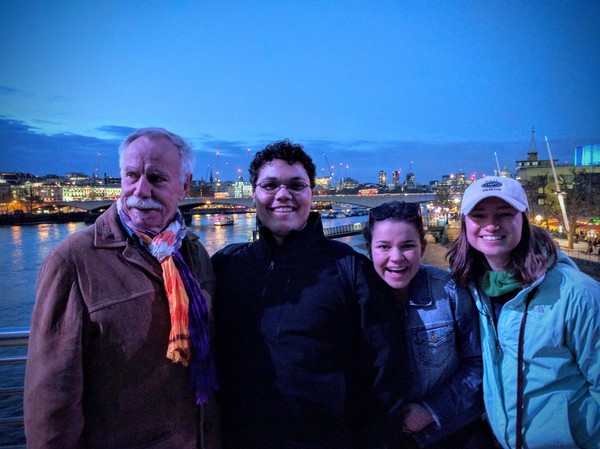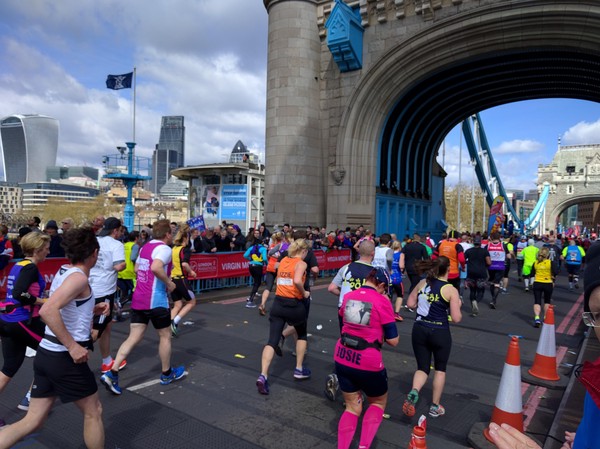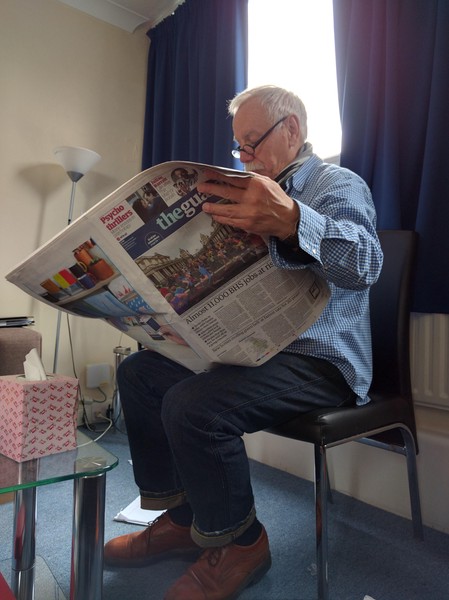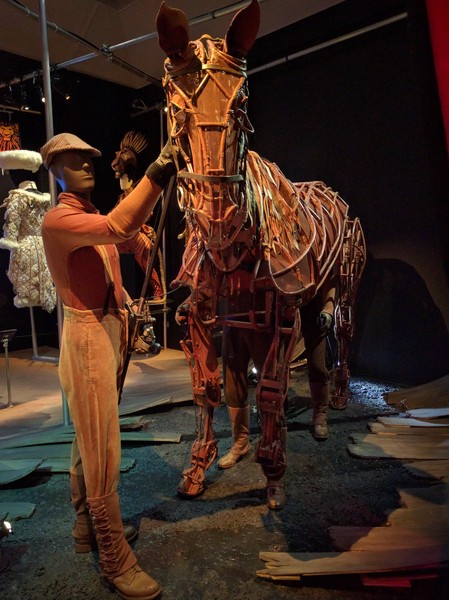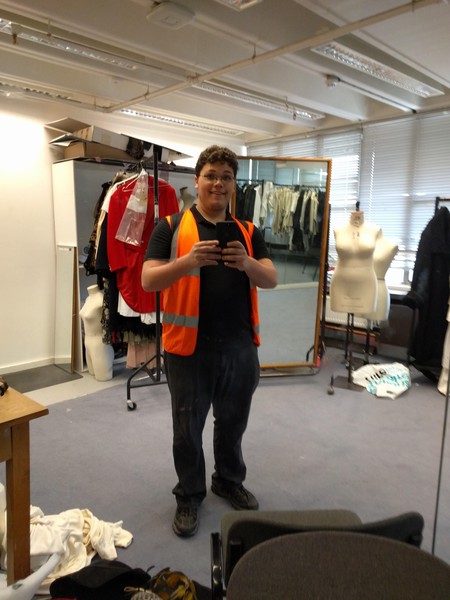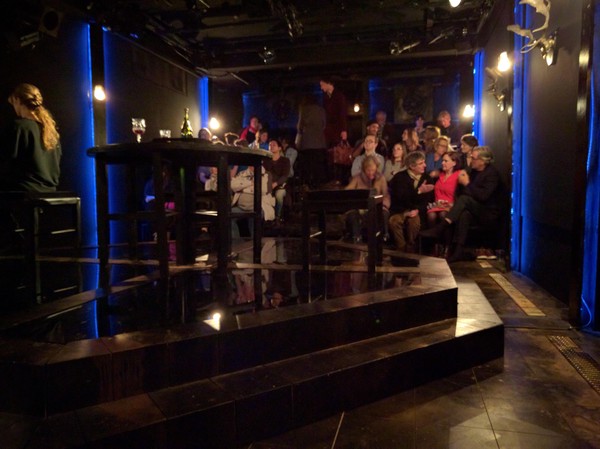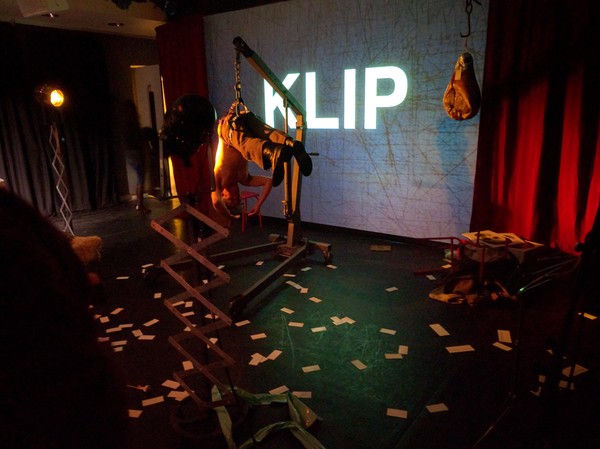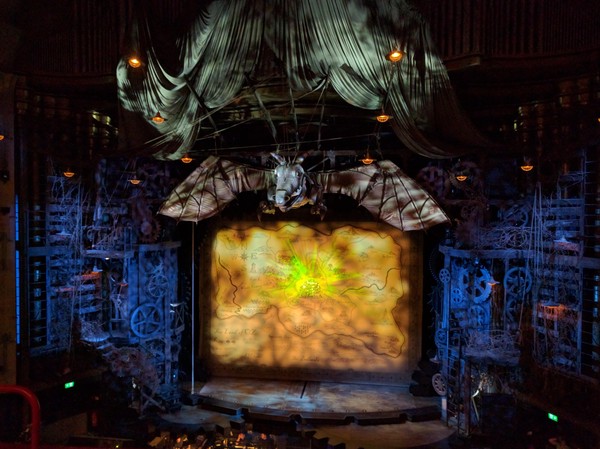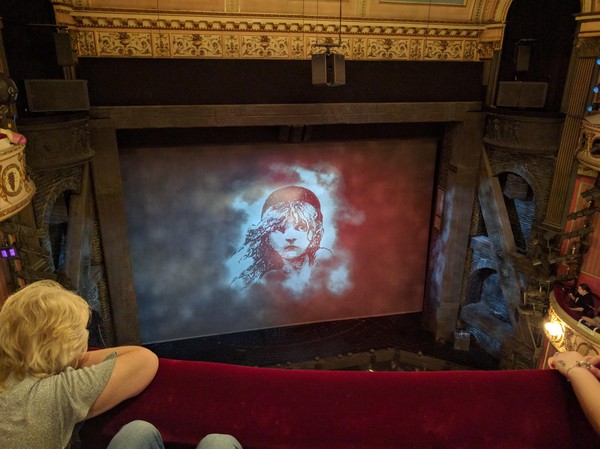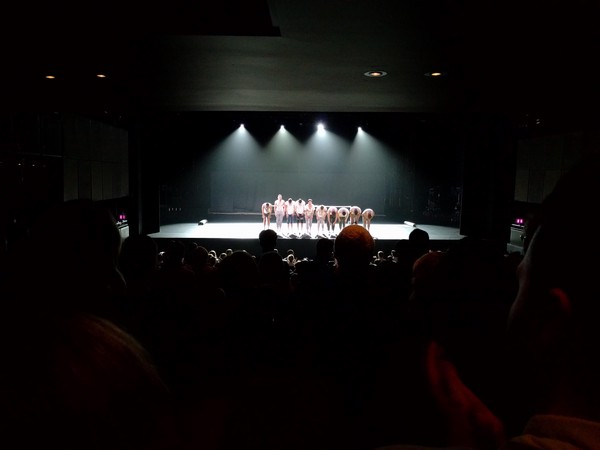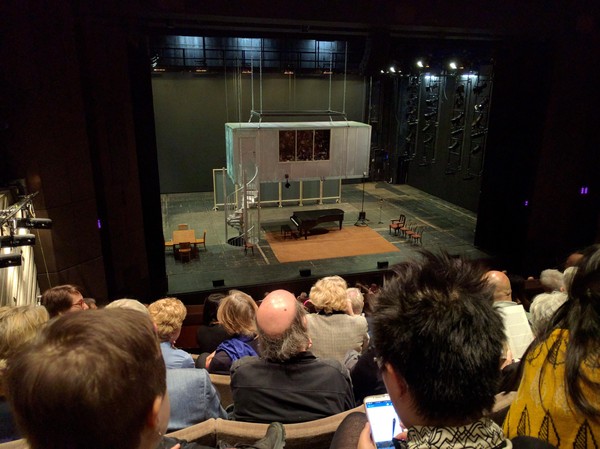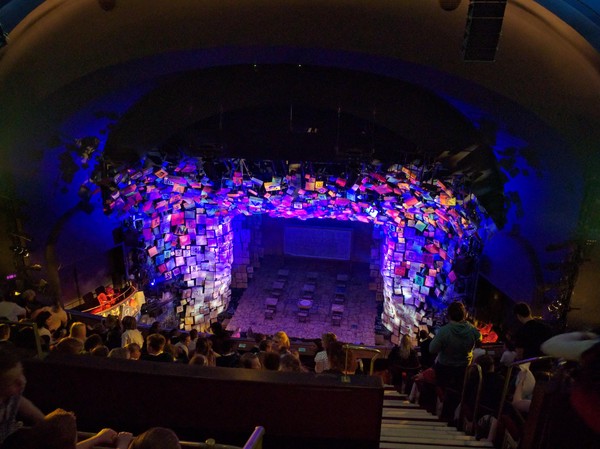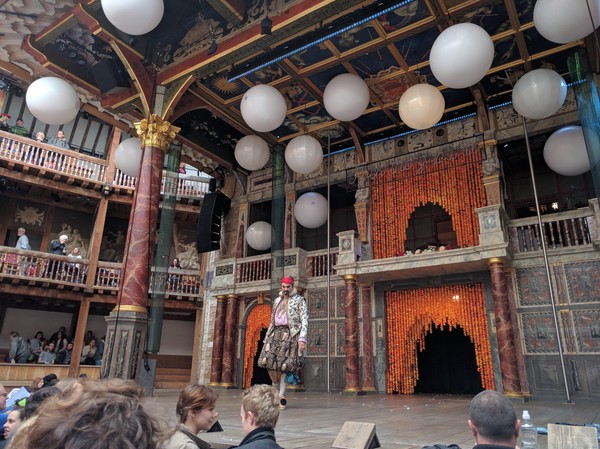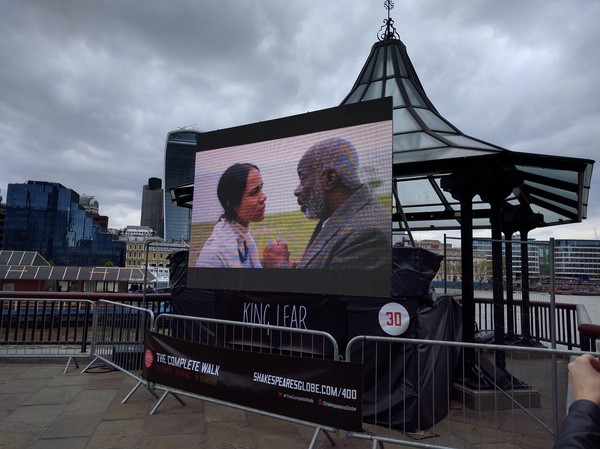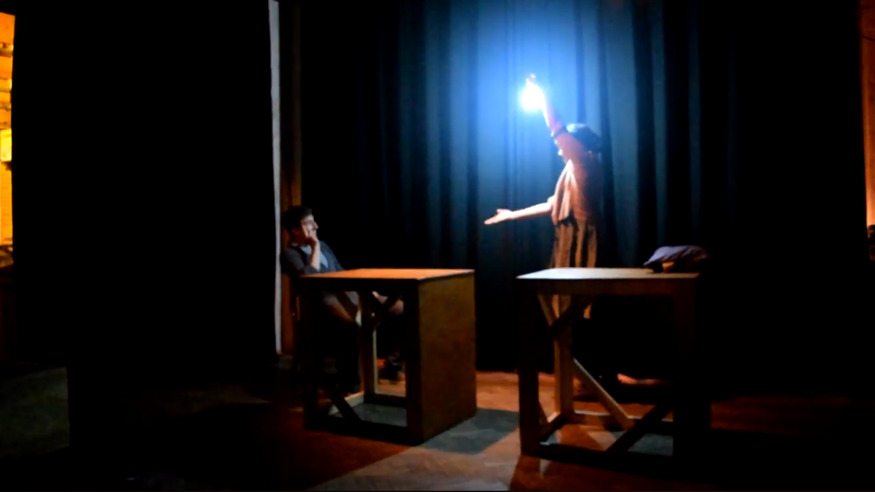

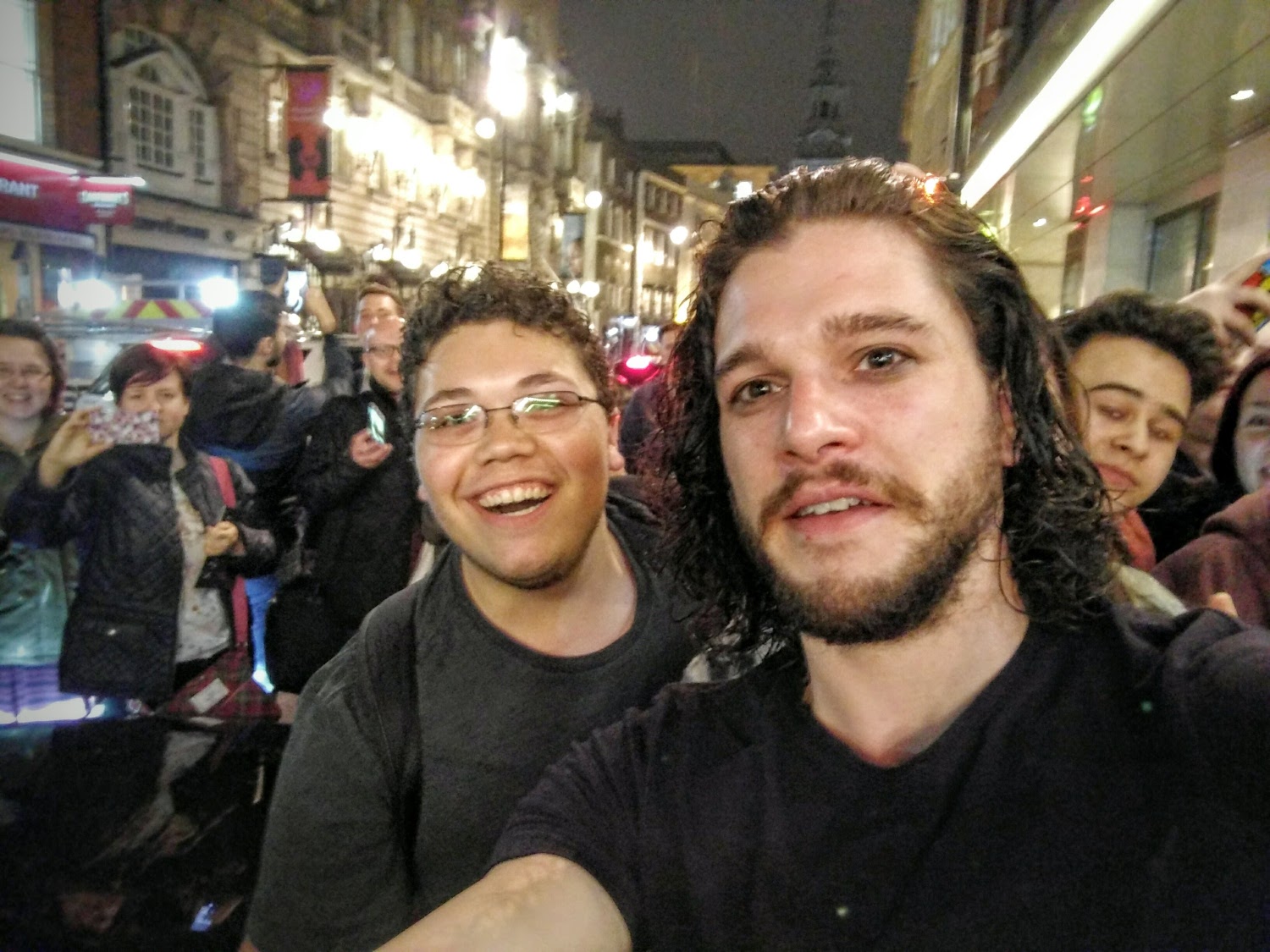
23 Plays in 23 Days: The Best and Worst Theatre in London
| Timeline: | Apr 18 - May 11, 2016 | |
| School: | Colorado College | |
| Course: | TH330 Performance Away |
Looking back on my TH330 Performance Away course in London, where I saw roughly two dozen performances across the city’s incredible theatre scene. Here are the three that blew my mind and the three that… well, didn’t.
Three and a Half Weeks of Theatre Immersion
The final course of my junior year was unlike any academic experience I’d had before. Instead of sitting in classrooms analyzing scripts, I was sitting in theatre seats analyzing live performances nearly every other day. From the West End to fringe venues tucked away in basements, from experimental multimedia pieces to classical revivals - London’s theatre scene became my classroom.
The beauty and challenge of this immersion was learning that “good” theatre isn’t easily defined. How do you measure success? By spectacle? By emotional impact? By technical innovation? By the conversations it sparks afterward?
After seeing everything from intimate 50-seat basement productions to grand proscenium stages, I realized that every performance offers something valuable - even the ones that make you check your watch. But some performances transcend mere education and become genuinely transformative experiences.
The Top 3: Performances That Changed How I Think About Theatre
1. X at Royal Court Theatre (Apr 28 & May 7, 2016)
The only play I saw twice
Before seeing Alistair McDowall’s X, I would have never believed that science fiction horror could work on stage. I was wrong - spectacularly wrong.
Set on a space station on Pluto with a crew stranded billions of miles from Earth, X wasn’t about fighting aliens or running out of oxygen. Instead, it explored something far more terrifying: the feebleness of the human mind when stripped of time, contact, and hope. When the station’s digital clock malfunctions, leaving only two red dots like sinister eyes, the astronauts lose their last connection to reality.
The technical achievement was staggering. Merle Hensel’s set design captured every detail McDowall specified - down to the “functional and charmless” feel of the space station. But then came the moment that left me speechless: after a scene of the crew screaming nonsense at each other in complete madness, the lights went out for three seconds. When they came back up, a gigantic nightingale lay dead on the floor, dwarfing the actors and covering the stage in fallen leaves.
X proved that theatre’s limitations are only as real as our imaginations allow them to be. And the cherry on top of the experience - in the lobby I met Sophie Pryce, the star of The Tempest production we saw just days before, who came to see X in all its horrific glory.
2. Kings of War at Barbican Theatre (Apr 29, 2016)
Four and a half hours that felt like a thrill ride
Toneelgroep Amsterdam’s adaptation of Shakespeare’s Henry V, Henry VI, and Richard III was the most stimulating portrayal of history I’ve ever witnessed. Director Ivo van Hove took massive creative risks that paid off categorically.
The production rejected traditional staging conventions entirely. Royal figures spoke facing directly upstage, treating the audience like commoners unworthy of their attention. Entire scenes played out in stark white corridors backstage, visible only through live camera feeds projected above the action. This denial of traditional sightlines made me more attentive, not less - I found myself thinking “Don’t look away, or you’ll miss something!”
The multimedia elements transcended mere exposition and became theatrical devices. During Richard III’s coronation, the cameraman circled him repeatedly to heavy metal music as he changed into his royal suit, emphasizing his relentless pursuit of power and making his descent into madness all the more terrifying.
Even performed in Dutch, the physical storytelling was so compelling that I understood every relationship and motivation without reading a single surtitle.
3. The Flick at Dorfman Theatre (May 10, 2016)
The power of absolutely nothing happening
Annie Baker’s The Flick shouldn’t work. It’s three and a half hours of people cleaning a run-down movie theatre. A college student gets a job, has a fling with a coworker, gets fired for taking extra money. The end.
And yet, it was mesmerizing.
The hyperrealistic set featured actual worn red theatre chairs, gum and trash on the seats, missing ceiling tiles. The actors’ naturalistic performances were so authentic that every word, every choice, every silence felt meaningful. My favorite moment: after Rose accidentally reveals she showed Avery how to use the projector, Sam slowly walks toward Avery in complete silence and suddenly rips open a bag of popcorn that explodes over the entire half of the theatre Avery had just finished cleaning.
The acting was extraordinary. Despite painfully long pauses, I never stopped believing the characters or lost interest. This is what happens when actors are so in tune with their roles that ordinary becomes profound.
The Flick reminded me that the most powerful stories are often the most ordinary ones - and that’s what makes them feel so close to home.
Honorary Mention: Son of Saul Film Screening
Technically not theatre, but unforgettable cinema
While not technically a theatrical performance, I have to mention the Son of Saul screening I attended - one of the most uniquely creative, expertly crafted, and emotionally moving films I’ve ever experienced.
László Nemes’ masterpiece is filmed to appear as a single continuous shot, entirely from the perspective of a Sonderkommando at the gas chambers in Auschwitz. The technical achievement is staggering, but it’s the emotional weight that stays with you. I’d had the unique privilege of attending a private pre-screening in Budapest during my study abroad the previous semester, and I was eager to see it again in London for its theatrical release.
Son of Saul reminded me that innovative storytelling - whether on stage or screen - can make the most difficult subjects deeply human and unforgettable.
The Bottom 3: When Theatre Misses the Mark
1. The Beanfield at Battersea Arts Centre (Apr 21, 2016)
Documentary drama at its most tedious
I’ll be blunt: documentary dramas are the least viscerally and intellectually engaging form of performance I’ve ever experienced. The Beanfield, which attempted to recreate the 1985 Battle of the Beanfield through testimonials and reenactments, exemplified everything wrong with this format.
Standing still in front of an audience and lecturing at them in monotone is great for two things: teaching college classes and putting people to sleep. The performers spent most of their time asking us to “imagine” we were the protesters they were describing instead of actually acting anything out. It’s like having Morgan Freeman stand next to a cardboard cutout of Nelson Mandela and asking you to imagine what it must have been like to be there.
The few moments that worked - a brief reenactment film and an onstage fight scene - only highlighted how much more effective the entire production could have been with different choices. I learned virtually nothing about the Battle of the Beanfield that I couldn’t have gotten from watching a straight documentary.
All I ask is that you decide whether you’re doing fiction or documentary - you can’t do both.
2. Mark Thomas’ TRESPASS at Tricycle Theatre (Apr 26, 2016)
Self-indulgence disguised as activism
Mark Thomas captured my attention and got some laughs, but his blend of stand-up comedy and political performance left me feeling patronized rather than inspired.
The first half was dominated by lazy stereotype jokes about the Americans in the second row (us). What started as charming audience interaction quickly devolved into something that felt like heckling. When he continued these jokes through the entire first act, it seemed less like comedy and more like a personal attack.
The second half focused on his “acts of minor dissent” - small demonstrations and protests. While I appreciate incremental change as a methodology, his storytelling felt self-congratulatory. Combined with obvious book promotion and condescending warnings about cell phone use, the performance came across as more interested in elevating Mark Thomas than engaging with serious political issues.
I got a few good laughs and learned about some creative forms of protest, but overall left feeling that the performance served the performer more than the audience.
3. Boy at Almeida Theatre (May 6, 2016)
Technical brilliance, narrative emptiness
Leo Butler’s Boy featured one of the most impressive set designs I saw all block. The entire stage was bordered by a giant conveyor belt that never stopped running, with actors seemingly levitating as they were carried around the curved edges. The production simulated London street life brilliantly - either you move with the flow or struggle to stay upright as it flows past you.
But technical achievement can’t save a story that doesn’t know what it wants to say.
We follow homeless teenager Liam through various London settings, but the episodic structure serves no larger purpose. In one scene, two chatty girls show up at a bus stop, eat chicken, chat extensively (seeming to set up character development), then throw their food away and leave forever. The only point was for Liam to get the discarded chicken.
While the play succeeds in showing how systems fail adolescent boys, the overall narrative isn’t compelling enough to justify the impressive staging. Boy proved that spectacle without substance leaves audiences admiring the craft while forgetting the story.
Honorary Mention: Doctor Faustus at Duke of York’s (May 10, 2016)
When star power can’t save poor direction
Doctor Faustus deserves a dishonorable mention for proving that even the most recognizable actors can’t overcome terrible directorial choices. This production starred Kit Harington at the peak of Game of Thrones popularity - just before Season 6 premiered with one of the highest-rated TV episodes of all time.
Unfortunately, director Jamie Lloyd’s vision turned every character into a campy, over-the-top caricature with no redeemable or relatable qualities. Harington’s lackluster performance wasn’t entirely his fault - every actor seemed trapped in the same theatrical prison of exaggerated choices.
The moment seared into my brain: a ridiculous scene where Faustus was being groped by an angel, with Harington’s excessively loud moans making me cringe and think, “Who the heck actually sounds like that?”
The silver lining? I got to briefly meet Kit Harington after the show at the stage door amongst a sea of excited fans. He seemed genuinely nice, asked where I was from, and we had a brief chat about Colorado before taking a selfie. As a person, he was delightful - which made the wasted potential of his performance all the more disappointing.
What I Learned About “Good” Theatre
These six performances taught me that theatre’s power doesn’t come from avoiding failure - it comes from making bold, specific choices and committing to them completely. X, Kings of War, and The Flick succeeded because they dared to be unpredictable. They featured brilliant acting, thoughtful design, and strong narratives, but more importantly, they did something unique that I’d never seen before.
The worst thing a play can be is predictable.
The performances that disappointed me weren’t technically incompetent - they were safe. They made choices based on convention rather than conviction. They tried to do what theatre “should” do instead of discovering what theatre could do.
After two dozen performances across London’s incredible theatre landscape, I’m convinced that the best theatre happens when artists trust their vision enough to risk failure. Sometimes that risk pays off with transcendent art. Sometimes it doesn’t.
But I’d rather watch someone fail spectacularly while reaching for something extraordinary than succeed mundanely by playing it safe.
Complete List of Performances
For those curious about the full scope of my London theatre immersion, here’s every performance I attended during my TH330 Performance Away block in Spring 2016, in chronological order:
Click to expand & collapse the list…
- The Curious Incident of the Dog in the Night-Time - Gielgud Theatre (Apr 18, 2016)
- The Tempest - Olivier Theatre (Apr 19, 2016)
- Ma Rainey’s Black Bottom - Lyttelton Theatre (Apr 19, 2016)
- Smoke & Mirrors - Jacksons Lane (Apr 20, 2016)
- The Beanfield - Battersea Arts Centre (Apr 21, 2016)
- Life by BalletBoyz - Saddlers Wells Theatre (Apr 22, 2016)
- KLIP - Southbank Centre (Apr 23, 2016)
- The Iphigenia Quartet - Gate Theatre (Apr 25, 2016)
- Mark Thomas’ TRESPASS - The Tricycle Theatre (Apr 26, 2016)
- The Caretaker - The Old Vic (Apr 27, 2016)
- X - Royal Court Theatre (Apr 28 & May 7, 2016)
- Cyrus Ave - Royal Court Theatre (Apr 28, 2016)
- The Shakespeare Walk - Bankside (Apr 29, 2016)
- Kings of War - Barbican Theatre (Apr 29, 2016)
- In the Heights - Kings Cross Theatre (Apr 30, 2016)
- The Last Supper - Southbank Centre (May 2, 2016)
- A Midsummer Nights Dream - Globe Theatre (May 3, 2016)
- Les Blancs - Olivier Theatre (May 3, 2016)
- The Destroyed Room - Battersea Arts Centre (May 4, 2016)
- Matilda (Bonus) - Cambridge Theatre (May 4, 2016)
- Son of Saul (Bonus Film) - Cinema (May 5, 2016)
- Another World: Losing Our Children To Islamic State - Temporary Theatre (May 5, 2016)
- Boy - Almeida Theatre (May 6, 2016)
- The Flick (Bonus) - Dorfman Theatre (May 10, 2016)
- Doctor Faustus (Bonus) - Duke of York’s (May 10, 2016)
- Les Miserables (Bonus) - Queen’s Theatre (May 11, 2016)
Photo Gallery
Special thanks to Professor Andrew Manley for teaching this wonderful class, and to all the artists who put their work on stage - even the ones I didn’t connect with taught me something valuable about the craft. Ever seen a performance that blew your mind or changed your perspective on something? Let me know in the comments!
Related Posts
 Iris-31: A Play in VRApr 30
Iris-31: A Play in VRApr 30
